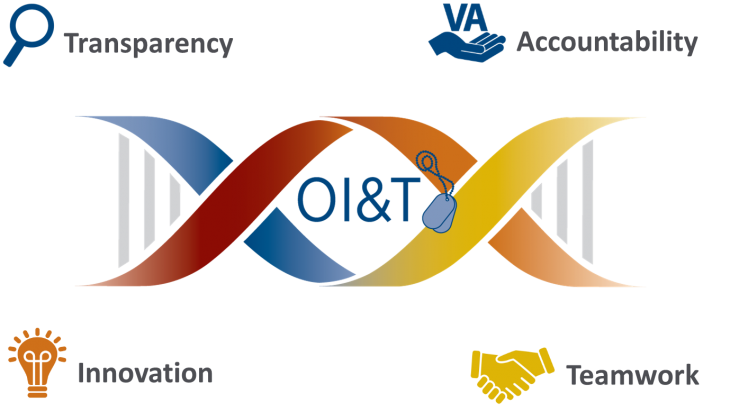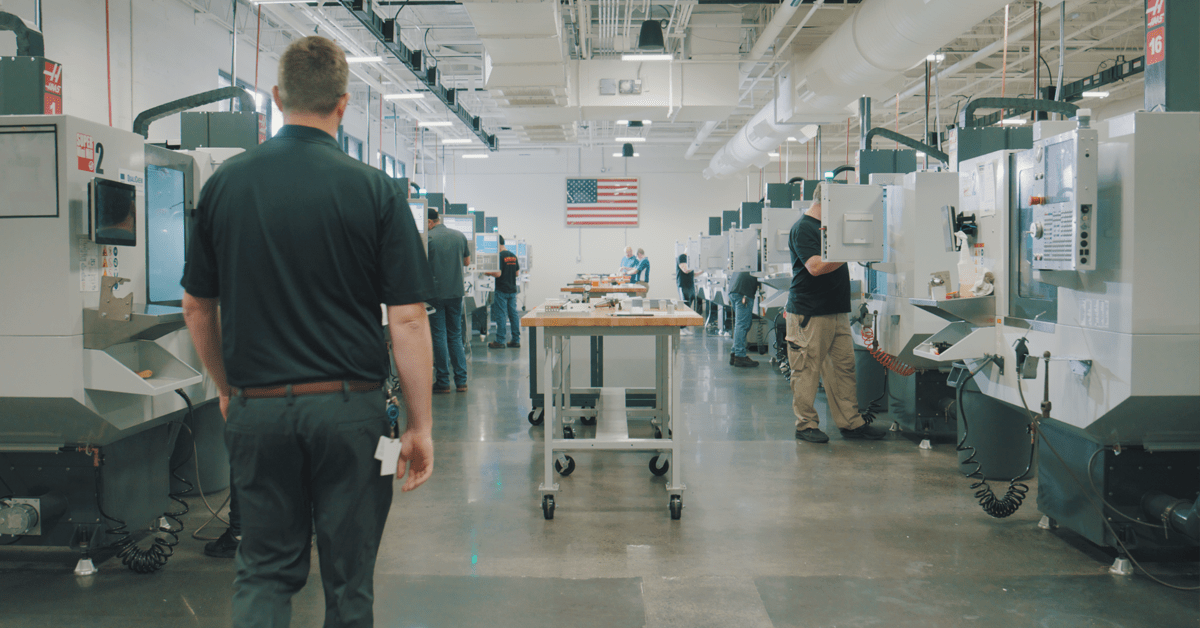I have had the honor to serve in the Obama Administration as the assistant secretary of Information and Technology, and chief information officer at the U.S. Department of Veterans Affairs. This appointment was a true gift, given my family’s history in serving this country. My father was a Navy Veteran; my stepdad retired from the Army after 20 years of service; and my father-in-law served in the Air Force. In 2014, my nephew retired from the Navy after over 20 years of service. My immediate family and I made a commitment to the CIO role so that through me, we are able to serve those who have served us.
My focus as assistant secretary and CIO has been to ensure that the team is fully engaged in working on the challenges within VA IT and on implementing solutions to create effective interfaces to our Veterans and user communities. Throughout my tenure at VA, the CIO organization has been driving continuous change. This was not incremental change, but comprehensive, discontinuous change. In 2016, about 70 percent of leadership was doing something different from the year before. When we began this journey we first committed to five management principles that guided me in my private sector work. Our success at VA proves these are effective in government as well.
Stay focused on the customer
We put the Veteran at the center of everything we do. And I ask my team to reflect on one question to guide all their daily activities: “What will this do for the Veterans?” The continued focus on outcomes for Veterans helps prioritize our resources, helps us be better listeners, and delivers faster and better care. Our Veterans and the general public expect that VA will keep pace with advancing technology to create an interactive experience where Veterans easily engage with VA technology to access the care and benefits they deserve.
Keep the goals clear and simple
After gathering feedback from our oversight bodies, our customers and business partners, we organized our transformation around three main goals.
- Stabilize and streamline core processes and platforms;
- Eliminate material weaknesses; and
- Institutionalize a new set of capabilities to drive improved outcomes
These goals touch every corner of the enterprise, they have enhanced all aspects of our work, and shifted the foundation of how OI&T does business.
Put people at the center of change
During our transformation, we created the Office of Development and Engagement to focus on our greatest resource, our people. We invested in our employees by creating new career tracks, developed targeted and flexible training modules, and held more events to bring employees in direct contact with OI&T leadership. Employee satisfaction is up. In OMB’s 2016 Benchmarks for Customer Satisfaction survey, OI&T rose from number nineteen to five out of 24 federal agencies in just one year.
Organize for success
By placing the Veteran at the center of our strategy, plans, and operations, the path to reorganizing our team became clear. In April 2016, OI&T created the Enterprise Program Management office, (EPMO) to serve as the control tower for major OI&T initiatives. In organizing the EPMO, we transitioned over 200 projects into a new Veteran-focused Intake Process (VIP) providing an agile, streamlined approach to project management, fewer required artifacts, and a shorter delivery cycle. We also stood up four further new functions, IT Account Management, Strategic Sourcing, Quality and Compliance, and Data Management. Each of these brings more accountability, efficiency, and heightened customer focus to our IT operations.
Create a values-based culture
Our mission is to vastly improve the Veteran experience by living our core principles of transparency, accountability, innovation, and teamwork. These principles are the details of who we are, what we’ve accomplished. Perhaps my proudest accomplishment is starting to change the culture of OI&T. The group acts as a single team and has started to break down the silos that used to hold us back.
In addition, it is clear that OI&T is putting the spirit of fearless innovation, into a government organization and achieving remarkable results. Our developers are putting the Veteran at the center of design work, by positioning team members in the field to gather Veteran and clinician user experience and feedback. OI&T is then able to deliver needed services to Veterans on devices they already use. For example, VA is currently field testing a mobile application that will send Veterans appointment reminders, prompt Veterans to track and securely upload basic health data and readings, and receive progress reports. The app promotes self-care, and puts the Veteran in control of his or her own data. Innovating in this way empowering Veterans, also energizes the team and keeps us focused.
Leading OI&T has been a highlight of my career. It is clear to me that a genuine commitment to the mission of any organization, public or private, coupled with a set of enduring principles can inspire great accomplishments. At OI&T, we are becoming a federal leader in IT services, while at the same time remaining fiercely accountable to our most important stakeholder, the Veteran.

Topics in this story
More Stories
Accelerated Training in Defense Manufacturing equips students with the latest technologies and offers full scholarships for training and housing.
This post contains jobs for the week of Nov. 25, 2024. Each week, we post relevant and timely listings as we receive them, and for the locations listed.
Honor Flights honor America's Veterans by flying them to Washington, D.C., to visit the memorials built in their honor. Read a first-hand account and find out how to get involved as a participant or volunteer.







The Company has executed and keeps on actualizing different measures to address the recognized material shortcomings and to enhance the general viability of its inner control over money related revealing.
What you mean is that the more pain the Veteran is in the less you will do. Including leaving all veterans who were taking Opioids were left to suffer through withdrawals with no support for the period. A md from the so-called Co-occurring pain clinic where the pain Shrink must be forced to order an ex-ray of my neck 9 or 10 weeks ago and still has not even read the report, which states that there are several dislocated vertebrae. And this had to be forced on the physician, who calls himself a pain specialist, what a joke. If you made all these improvements to the IT system, would you please train the lousy primary care doctors how to use the damn things. Maybe a lesson on the use of computers would be appropriate. By the way I hold a degree with honors, made the National Deans list 2 years in a row. And a member of a national honor society. When Bill Gates was in a hotel room writing DOS, we were using a cassette recorder for our storage. Maybe you should have used a Veteran of more than 40 years in the computer industry to help you improve the app and security of our private information.
All this technology has done was remove personal interaction between Doctors and Veteran patients. A visit to a VA Doctor is spent watching the Doctor read the computer screen, a vet might as well see a robot for all the interaction there is between the Doctor and the vet.
With all this self patting on your back and your great family history service the Vet is still left unserved. How has all this high dollar technology helped us that have served. Bennifits are stilled automatically denied. With information right at employees finger tips my claim and many others have been denied basically because no one even takes the time yo look at medical records or any record. Agent Orange was used not only in southeast Asia but extensively throughout bases in the states but no claims are honored. A vet can be diagnosed with PTSD and be treated for it at the same time his request is denied. Why don’t the VA use this wonderful technolog? Better yet let’s make VA administrators, congress, and the senate rely on the American public to decide their health care. Maybe they should also receive the same amount paid to disabled vets as their salary. I bet the disability pay rate would increase then.
It sounds more like you spent 18 months destroying what little morale was left in the VA IT workforce, making almost no improvements in the security of VA networks, wasting billions of IT (and taxpayer) dollars stumbling around in the dark undecided about what to do with VISTA or EHR, and basically leaving VA worse than you found it. From a veteran who needs VA to work better, thanks for nothing, LaVerne!
I need you to look at directive 1032 which lays out how the VA is to react when denying veterans health care. Here is a link to a white paper I wrote on why the VA is getting away with denying veterans health care. I would like to see how you can use technology to guarantee when the vet is denied health care the Notice of Decision is automatically sent out with the form VA4107VHA. H